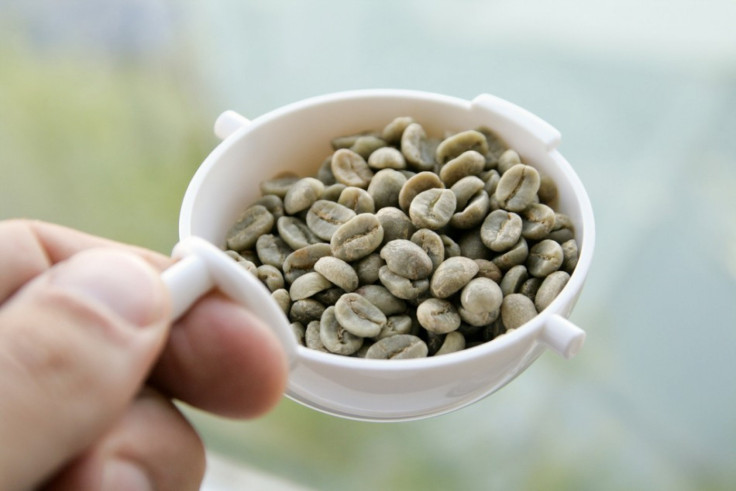Coffee Beans: A Market To Watch In 2014

Coffee is a commodities market to watch late this year and into 2014, as historically low coffee bean prices should reach a bottom and revive investor interest, according to one commodities expert.
Prices have declined from recent highs of about $2 per pound, and now trade in the range of $1.15 to $1.20 on the New York ICE Futures exchange.
“You really have to look at the market and see if this is the bottoming,” Carlos Sanchez, director of asset management at CPM Group, told International Business Times, referring to recent historic lows in Arabica coffee bean prices. “It’s something to look out for, a bottom over the next six months.”
Growing demand in emerging markets like China, India and Brazil bode well for coffee beans over the long term, even though coffee companies like Starbucks Corporation (NASDAQ:SBUX) have saturated developed economies.
“With rising wealth, and increased consumption of commodities, in developing markets … companies like Starbucks and other providers of coffee are trying to increase their market share,” said Sanchez. “That’s just going to continue until, perhaps, you see the situation here where almost every town, or every other town, has a Starbucks.”
Steadily rising demand, combined with limited supply from South American countries, particularly Brazil, where coffee farmers have slowly cut back to favor more profitable crops, will drive dynamics over the next few years, he said.
To be sure, bumper harvests this year in Brazil, the world’s largest supplier of Arabica coffee beans, have helped prices plunge this year. Supply has outpaced demand in 2013, but it’s unclear how long that can last, said Sanchez.
Commodity market fluctuations, however, won’t change the price you pay for coffee in the grocery store or at a café. That’s because coffee shops often incorporate other costs into their cup prices, while grocers hedge on commodity prices, fixing them in advance, to stabilize costs.
Starbucks expects to save $100 million in fiscal year 2013 from declining commodity costs, the company told IBTimes in an email, though this won’t necessarily be passed onto consumers.
“Starbucks takes a holistic approach to value which includes the quality of our coffee, food and products we sell,” the company said in the emailed statement. “We approach pricing on a long-term, product-by-product, market-by-market basis.”
Coffee commodity costs usually account for less than 10 percent of store expenses, according to Starbucks spokesman Zack Huston. Starbucks could also see another $100 million in commodities savings in 2014, as executives mentioned in its last earnings call, though only its earnings release on Oct. 31 will make this clear.
Dunkin’ Donuts’ (of Dunkin Brands Group Inc. (NASDAQ:DNKN)) chief supply officer Scott Murphy told IBTimes that significantly lower coffee costs in 2013, compared to 2012, also won’t necessarily change its coffee prices, because independent franchisee operators of Dunkin’ outlets set their own prices.
“As a franchisor, Dunkin' Brands is mostly isolated from coffee commodity swings in the short to medium term. Our income is derived from franchisee royalties,” he wrote in an email. “Our franchisee-owned NDCP [sourcing and distribution co-operative] continues to buy forward strategically to take advantage of market conditions.”
But coffee drinkers, especially fans of expensive specialty coffee, should still pay attention to coffee supply and demand trends around the world.
Specialty coffee production in places like Costa Rica, a major producer, is declining slowly, falling 35 percent in the past decade. That’s even as demand for luxury coffee explodes, according to Ken Lander, a small Costa Rican coffee farmer.
“Demand is increasing globally for specialty coffee, but the economic factors of being a coffee farmer are lowering the supply,” Lander told IBTimes, citing strong fresh demand from Chinese, Japanese and South Korean drinkers.
“If we don’t get some kind of economic stability built into what a farmer can make to grow this highly laborious product …we’re going to see a continued drop in supply,” he said.
Lander, a retired Georgia trial attorney, left the U.S. to start THRIVE Farmers Coffee, a business that helps South American coffee farmers sell packaged coffee directly to retailers, which pockets them more profits.
Although Brazil is the top producer of Arabica coffee beans, lower quality Robusta beans often come from Vietnam, Indonesia and the Ivory Coast, as well as Brazil. Price spreads between the two types have stuck broadly to historical norms lately, according to Sanchez.
Both Starbucks and Dunkin' buy Arabica coffee exclusively. Dunkin sources from Central and South America, while Starbucks buys from Africa and the Asia-Pacific, too, spreading its sourcing across 29 countries.
Other commodities analysts have different views from Sanchez.
Goldman Sachs Group Inc. (NYSE:GS) analyst Damien Courvalin wrote in a research note last week that a coffee surplus in 2013 and 2014 will leave coffee stocks at their fullest levels in five years. The bank maintains a three-to-12-month price forecast of $1.20/lb, citing higher production from Colombia.
Coffee prices could hit $1/lb before reaching that floor, a price last seen in September 2006, after New York futures contracts hit a four year low in mid-September, reports the Wall Street Journal.
But even as supply spikes flatten prices, that should be a signal to the market, Sanchez told a New York commodities conference in September.
“That’s a market to watch out for, globally, because demand is always rising for coffee,” he said then. “And there’s only so much supply to go around, especially at current prices.”
© Copyright IBTimes 2024. All rights reserved.




















